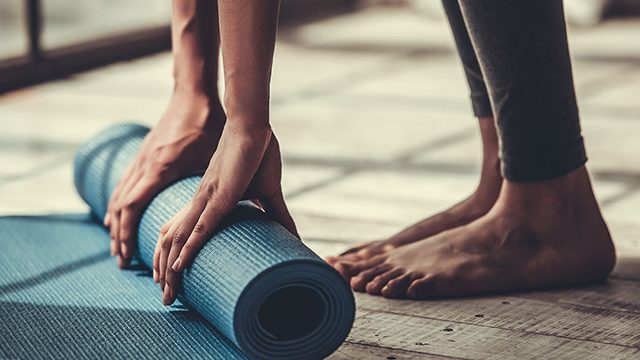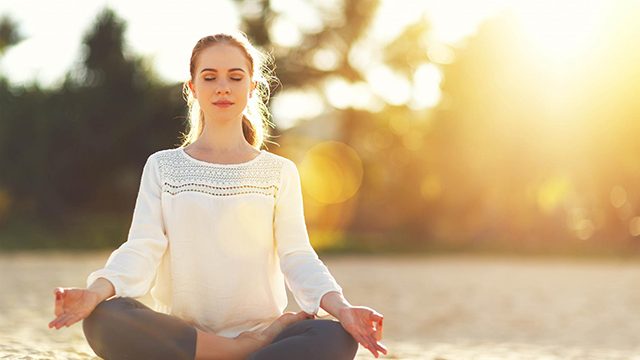Pilates, many of us have heard about it, some of us even use it, but how much do you know about Pilates and the foundations on which it is built? The Pilates classes at Pilates Northern Beaches Anytime have improved my posture, increased my strength and flexibility, and brought me an increased awareness of my body.
Pilates is never a bunch of exercises randomly thrown together, there is always a sense of flow, just like when doing its’ predecessor Yoga. The exercises have always been chosen because they compliment each other in some way and that sense of flow makes it easy to move from one movement to the next. Pilates is all about building a core of strength alongside your spine and in your abdomen from which all other strength and movement flow. The techniques strengthen weak muscles, lengthen those that are short, increasing joint mobility and help you to achieve stability though the torso. No force is used, all the movements are smooth, slow and controlled to avoid any possibility of strain.
There are eight important principles that underlie every Pilates move and session to help you achieve the rewards: improved flexibility, strength, joint mobility, co-ordination, balance and alignment, and the elimination of bad postural habits.
1. Relaxation: One of the most important skills you can learn in life and exercise is relaxation, by this I mean learning to work your body without undue tension. By relaxing the body before you begin any exercise and by focusing your attention on the relevant area, you will find that you have much more control and fluidity to your movements. You will be able to make the fine adjustments to your body needed to put yourself in the correct positions and perform the movements without too much tension. Tension needs to be just enough to achieve the movement and no more, as when you tense unnecessary muscles during a move, you risk injury. The secret to Pilates lies in the balance you exert between relaxation and control.2. Concentration: Joseph Pilates said, “It is the mind itself which builds the body.” The ability to focus your mind on what each part of your body is doing and stay in the moment during an exercise is quite an achievement. This can take a little time to master however like all things, when done well will make a great difference to your Pilates workouts. When you realise that without your mind your body cannot move in the required way, you begin to understand the importance of this step. All movement come from a movement originally desinged and visualised in the mind, which then sends the signals to the apprporiate muscles. This is called ‘mindfulness’ and this skill when used for all daily tasks can create a major difference in your life, however it’s use in Pilates is what we are talking about here. Here is something to try before your next session and let’s see if your Pilates instructor notices the difference to your posture? **Whenever you are standing or walking imagine that you have a string tied to the top of your head and 100 balloons tied to the other end of that string. This visualisation will tell the muscles in your body to stand taller and straighter, and if done on a daily basis can help to build core strength without your even having to think about it.3. Co-ordination: As you get older balance and co-oridination become vitally important to your mobility, and both of these are tied to concentration so please keep this in mind when reading these three. When you are aware of what you are doing and what you intend to do next, your body become more co-ordinated, one movement flowing into the other. Watch a baby learning to walk, it concentrates so hard, what is it doing? Listening to the messages coming back into the brain from the sensory nerves in its limbs, movement is a feedback mechanism where your brain tells the body what it wants to do, and then the body feeds information back to the brain that allows for adjustments to be made, this happens very quickly so quickly you may not keep up with it cognitively. However this constant ‘conversation’ is what makes your movements become co-ordinated, and how the baby learns to prefect its ability to walk. The stages of co-ordination are from awkward, to clumsy through to refined as your mind and body learn to co-operate, they cannot co-operate in this way if you do not know what you are going to do next, so be gentle with yourself as you learn the routines, you will eventually learn what you are doing well enough to have a meaningful ‘conversation’ with your body.4. Alignment: The body is a closed, biofeedback system that relies on each part doing its part to perform perfectly. If one part is out of alignment the whole structure is compromised, just like a house with uneven foundations, and just like that house not only will your structure be uneven and unstable the internal workings will also be affected. Your general health and wellness are intimately linked to the alignment of your body and rectifying any structural problems and giving your body the strength and flexibility to keep the alignment balanced can often alleviate many internal ills. Your body has been designed so that your weight is transferred through the center of each joint, and when your body is balanced your centre of gravity would be behind the navel, just in front of the 3rd and 4th lumbar vertebrae. A little known fact is that it is muscles that pull on bones, which creates imbalance in the body such as scoliosis and this can be treated by retraining the muscles to do their job properly and bring the body back into alignment. When one group of becomes over-dominant and the opposing group get lazy you have one group pulling on a joint or bone and the other lending no resistance this leads to mis-alignment, pain and eventually inflammation – more chronic pain.5. Breathing: As I have said in previous articles many of us do not breathe properly, many of us breath only into the top of our lungs (which is called panic breathing) which sends a signal to the mind and then back out into the body that you are in stress, and you wonder why you feel stressed all the time. It is vital to learn how to breathe well, just look at a baby breathe and copy this, we are all born knowin how to breathe well, we just forget. Breathing into the abdomen can create such a feeling of relief and balance to your whole system, in Pilates we teach you to control your thoracic and back muscles to expand the ribs fully. The breathing rhythm of a Pilates movement is to breathe in to prepare for movement and breathe out as you move. Moving on the exhalation will enable you to relax into the stretch and prevent you from tensing up unnecessarily.6.Flowing Movements: Movement is life, we naturally love to move our bodies, we learn from movement and we experience joy from moving our bodies freely, comfortably and energetically. Remember when you were a child and you jumped for joy or danced with happiness or skipped for fun? All the best stuff in life requires movement even laughing, talking, singing, eating, dancing, playing and I know that I can leave you to think of hundreds more. When our bodies are too stiff and sore to experience the joy of movement we miss out on so much fun, and injuring are more likely when our bodies are in this state and so it becomes a catch22 situation. Pilates restores you bodies ability to move flexibly, freely and energetically long into old age, remember your only as old as you feel.7. Centering: This is all about our core strength and balance which is the focal point to your Pilates workouts. The abdominal muscles along with the ‘erector spinae’ which run up on either side of the spine, act as a support for the spine and the internal organs. Before beginning a Pilates workout you will be asked to ‘center’, which involves stabilising the torso and enabling you to safely lengthen and stretch, with your lower back protected. In the course of a one hour Pilates session you are effectively performing hundreds of ab exercises – no wonder you create a core of strength. 8. Stamina: The postural muscles of the body needs stamina and endurance. Pilates aims to build up the endurance of the core muscles and once you become used to your Pilates sessions you will find that the exercises you once thought to be difficult and a strain will seem effortless. This change will be gradual as your body adjusts, however the difference to your daily life will seem worth the initial struggle. Even though Pilates is not an aerobic exercise you will notice an improvement to your stamina and endurance. Remember Pilates is one of the mainstays of dancers and they must have stamina.
Joseph Pilates made this claim of his system: “In ten sessions you will feel the difference. In twenty, you will see the difference, and in thirty you will have a whole new body.” That’s a big claim, why not prove him right?
Helen Eames owns ‘balancenoosa’ an innovative business whose motto is, “wellness that comes to you” set in the heart of Noosa on the Sunshine Coast, Qld. Australia. ‘balancenoosa’ specialises in bringing specialist in different disciplines to your premises, allowing you to book the session of your choice and wait in the comfort of your own home. Corporate Wellness Solutions are a speciality for the team at balancenoosa and a uniquely designed solution can be created for your organisation. http://balancenoosa.com.au/
Article Source: https://EzineArticles.com/expert/Helen_Eames/196748
Article Source: http://EzineArticles.com/1176999



